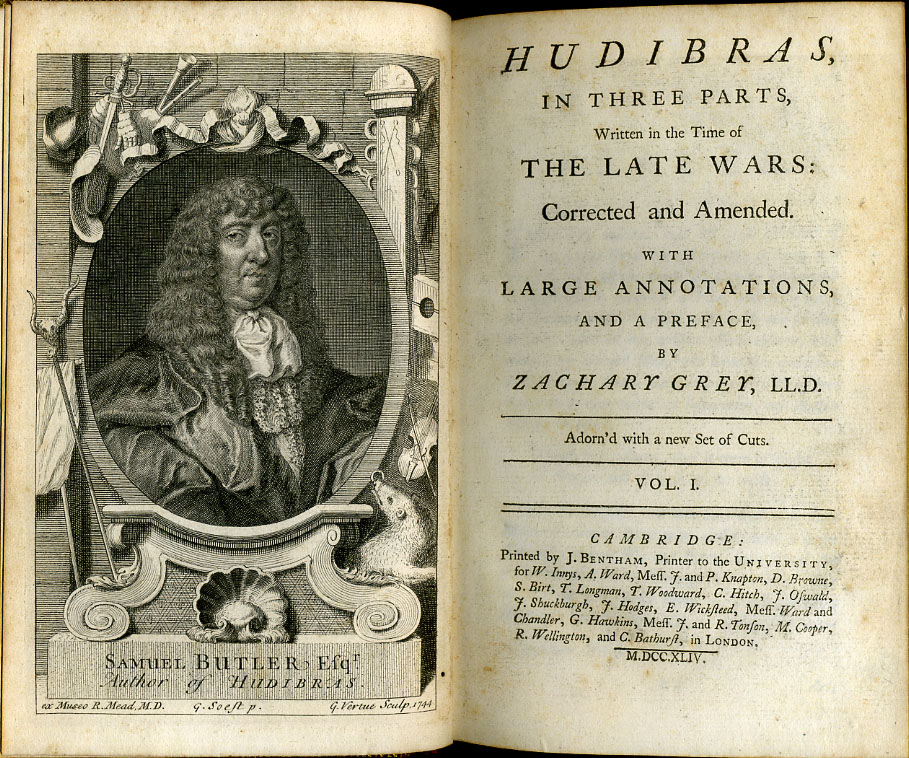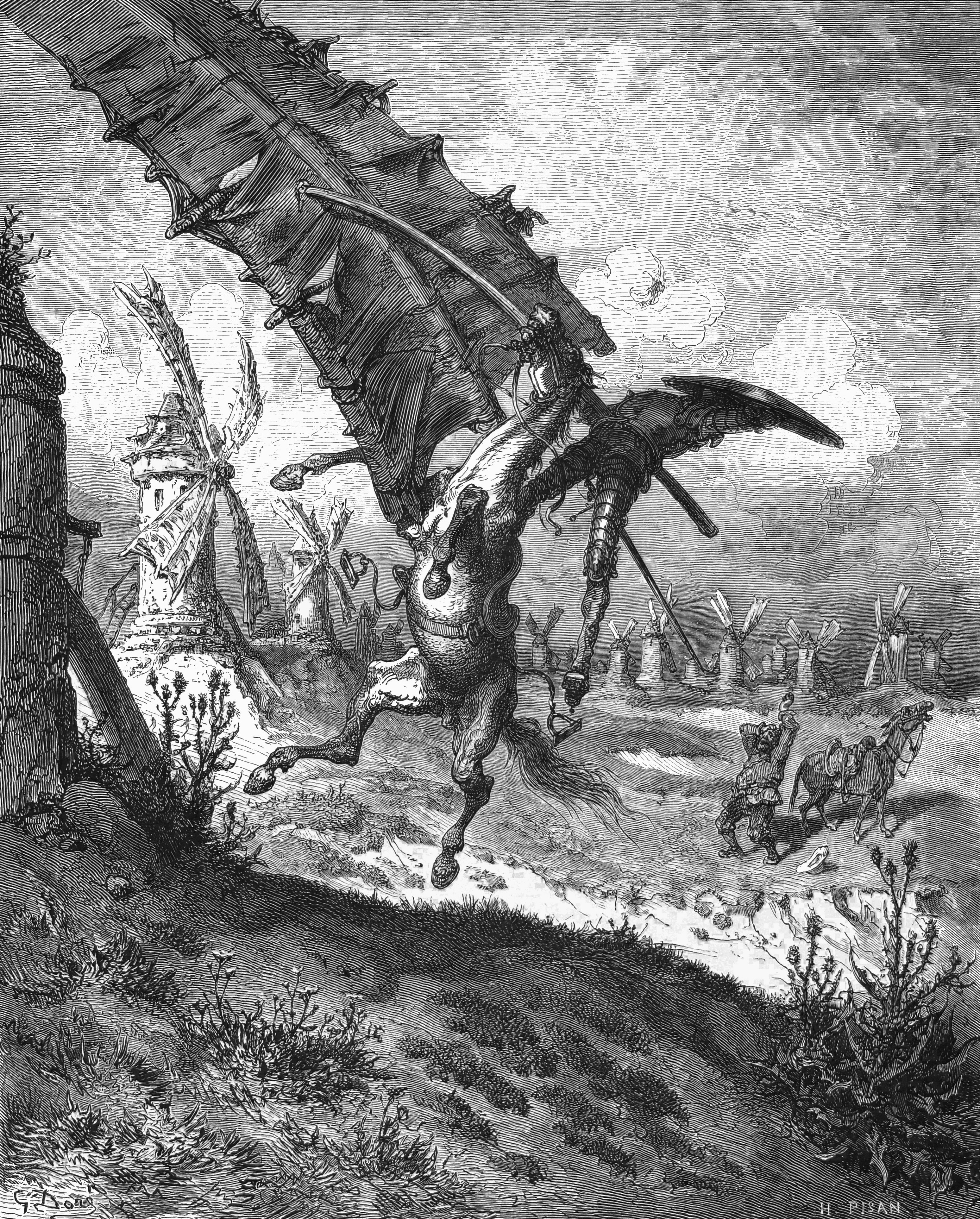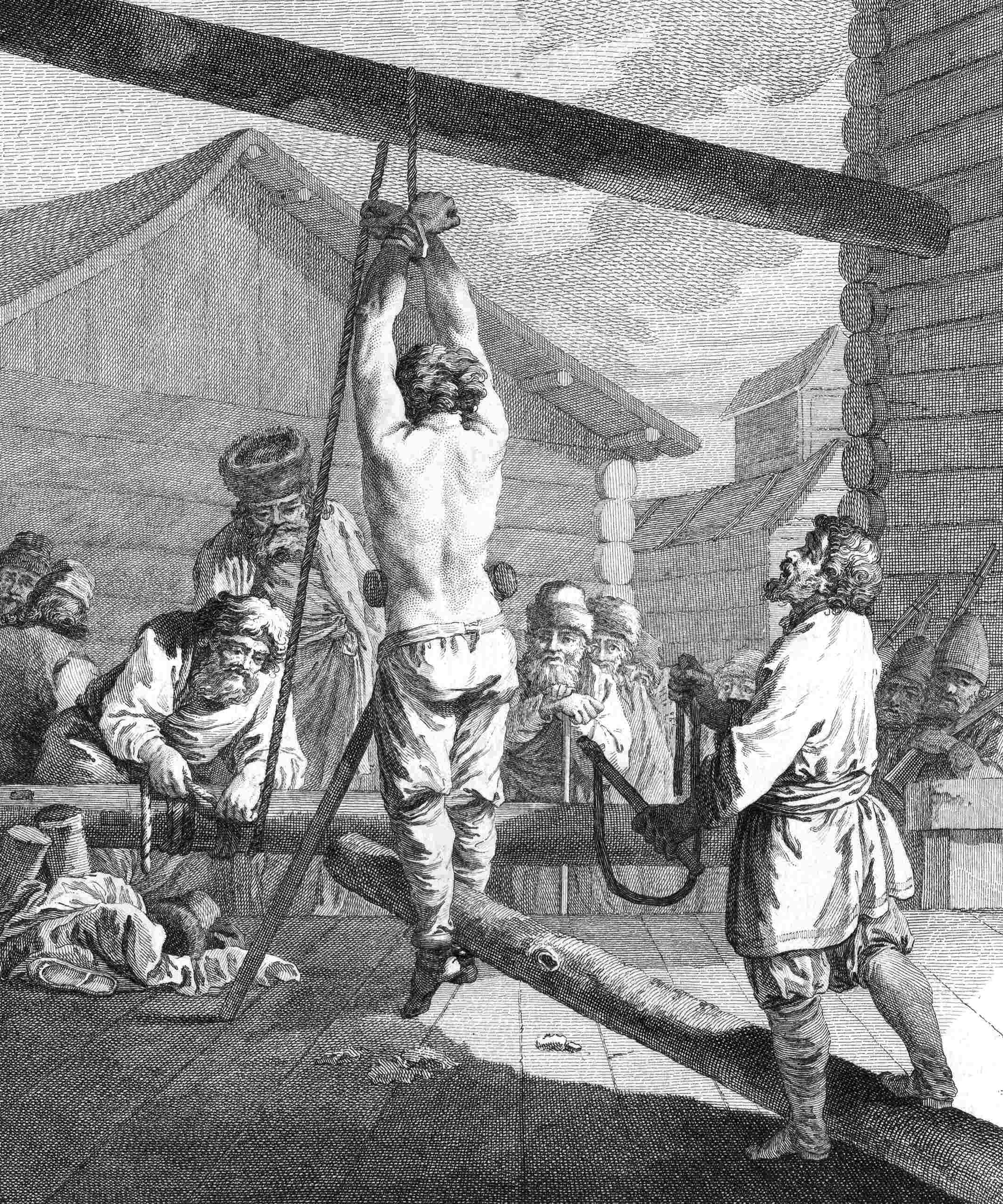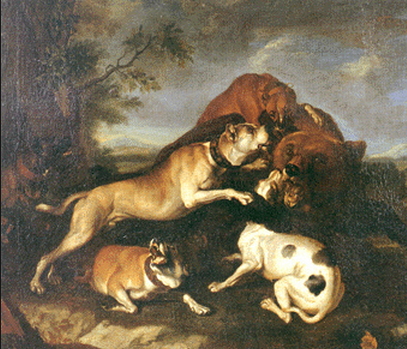|
Hudibras
''Hudibras'' () is a vigorous satirical poem, written in a mock-heroic style by Samuel Butler (1613–1680), and published in three parts in 1663, 1664 and 1678. The action is set in the last years of the Interregnum, around 1658–60, immediately before the restoration of Charles II as king in May 1660. The story shows Hudibras, a Cromwellian knight and colonel in the New Model Army, being regularly defeated and humiliated, as in Miguel de Cervantes' ''Don Quixote'', Butler's main inspiration. Colonel Hudibras' humiliations arrive sometimes by the skills and courage of women, and the epic ends with a witty and detailed declaration by the latest female to get the better of him that women are intellectually superior to men. ''Hudibras'' is notable for its longevity: from the 1660s, it was more or less always in print, from many different publishers and editors, till the period of the First World War (see below). Apart from Lord Byron's masterpiece ''Don Juan'' (1819–24), the ... [...More Info...] [...Related Items...] OR: [Wikipedia] [Google] [Baidu] |
Samuel Butler (poet)
Samuel Butler (baptized 14 February 1613 – 25 September 1680) was an English poet and satirist. He is remembered now chiefly for a long satirical poem titled '' Hudibras''. Biography Samuel Butler was born in Strensham, Worcestershire, and was the son of a farmer and churchwarden, also named Samuel. His date of birth is unknown, but there is documentary evidence for the date of his baptism of 14 February. The date of Butler's baptism is given as 8 February by Treadway Russell Nash in his 1793 edition of ''Hudibras''. Nash had already mentioned Butler in his ''Collections for a History of Worcestershire'' (1781), and perhaps because the latter date seemed to be a revised account, it has been repeated by many writers and editors. However, The parish register of Strensham records under the year 1612: "Item was christened Samuell Butler the sonne of Samuell Butler the xiiijth of February anno ut supra". Lady Day, 25 March, was New Year's Day in England at the time, so the ye ... [...More Info...] [...Related Items...] OR: [Wikipedia] [Google] [Baidu] |
Skimmington
Charivari (, , , alternatively spelled shivaree or chivaree and also called a skimmington) was a European and North American folk custom designed to shame a member of the community, in which a mock parade was staged through the settlement accompanied by a discordant mock serenade. Since the crowd aimed to make as much noise as possible by beating on pots and pans or anything that came to hand, these parades were often referred to as rough music. Parades were of three types. In the first and generally most violent form, an alleged wrongdoer (or wrongdoers) might be dragged from his or her home or place of work and paraded by force through a community. In the process, the victim was subject to the derision of the crowd and might be pelted and was frequently dunked at the end of the proceedings. A safer form involved a neighbour of the wrongdoer impersonating the victim while being carried through the streets. The impersonator was obviously not themselves punished and often cried out ... [...More Info...] [...Related Items...] OR: [Wikipedia] [Google] [Baidu] |
Mock-heroic
Mock-heroic, mock-epic or heroi-comic works are typically satires or parodies that mock common Classical stereotypes of heroes and heroic literature. Typically, mock-heroic works either put a fool in the role of the hero or exaggerate the heroic qualities to such a point that they become absurd. History Historically, the mock-heroic style was popular in 17th-century Italy, and in the post- Restoration and Augustan periods in Great Britain. The earliest example of the form is the '' Batrachomyomachia'' ascribed to Homer by the Romans and parodying his work, but believed by most modern scholars to be the work of an anonymous poet in the time of Alexander the Great. A longstanding assumption on the origin of the mock-heroic in the 17th century is that epic and the pastoral genres had become used up and exhausted,Griffin, Dustin H. (1994) ''Satire: A Critical Reintroduction'p. 135/ref> and so they got parodically reprised. In the 17th century the epic genre was heavily crit ... [...More Info...] [...Related Items...] OR: [Wikipedia] [Google] [Baidu] |
Don Quixote
, the full title being ''The Ingenious Gentleman Don Quixote of La Mancha'', is a Spanish novel by Miguel de Cervantes. Originally published in two parts in 1605 and 1615, the novel is considered a founding work of Western literature and is often said to be the first modern novel. The novel has been labelled by many well-known authors as the "best novel of all time" and the "best and most central work in world literature". ''Don Quixote'' is also one of the List of literary works by number of translations, most-translated books in the world and one of the List of best-selling books, best-selling novels of all time. The plot revolves around the adventures of a member of the lowest nobility, an Hidalgo (nobility), hidalgo from La Mancha named Alonso Quijano, who reads so many chivalric romances that he loses his mind and decides to become a knight-errant () to revive chivalry and serve his nation, under the name . He recruits as his squire a simple farm labourer, Sancho Panza, wh ... [...More Info...] [...Related Items...] OR: [Wikipedia] [Google] [Baidu] |
Spare The Rod And Spoil The Child
Spare or Spares may refer to: Common meanings * Spare (bowling), knocking down all remaining pins with a second roll of a bowling ball * Spare part A spare part, spare, service part, repair part, or replacement part, is an interchangeable part that is kept in an inventory and used for the repair or Refurbishment (electronics), refurbishment of defective equipment/units. Spare parts are an i ... * Spare tire People * Austin Osman Spare (1886–1956), English artist and occultist * Richard Spare (born 1951), British artist * Charlie Spares (1917–1958), British jockey Other uses * Spāre Station, a railway station in Spāre, Latvia * ''Spare'' (memoir), 2023 memoir by Prince Harry, Duke of Sussex * ''Spares'', a 1996 novel by Michael Marshall Smith {{dab, surname ... [...More Info...] [...Related Items...] OR: [Wikipedia] [Google] [Baidu] |
Flogging
Flagellation (Latin , 'whip'), flogging or whipping is the act of beating the human body with special implements such as whips, rods, switches, the cat o' nine tails, the sjambok, the knout, etc. Typically, flogging has been imposed on an unwilling subject as a punishment; however, it can also be submitted to willingly and even done by oneself in sadomasochistic or religious contexts. The strokes are typically aimed at the unclothed back of a person, though they can be administered to other areas of the body. For a moderated subform of flagellation, described as ''bastinado'', the soles of a person's bare feet are used as a target for beating (see foot whipping). In some circumstances the word ''flogging'' is used loosely to include any sort of corporal punishment, including birching and caning. However, in British legal terminology, a distinction was drawn between ''flogging'' (with a cat o' nine tails) and ''whipping'' (formerly with a whip, but since the earl ... [...More Info...] [...Related Items...] OR: [Wikipedia] [Google] [Baidu] |
Stocks
Stocks are feet and hand restraining devices that were used as a form of corporal punishment and public humiliation. The use of stocks is seen as early as Ancient Greece, where they are described as being in use in Solon's law code. The law describing its use is cited by the orator Lysias: "'He shall have his or her foot confined in the stocks for five days, if the court shall make such addition to the sentence.' The 'stocks' there mentioned, Theomnestus, are what we now call 'confinement in the wood (''Lys''. 10.16). Form and applications The stocks, pillory, and pranger each consist of large wooden boards with hinges; however, the stocks are distinguished by their restraint of the feet. The stocks consist of placing boards around the ankles and wrists, whereas with the pillory, the boards are fixed to a pole and placed around the arms and neck, forcing the punished to stand. Victims may be insulted, kicked, tickled, spat on, or subjected to other inhumane acts. In the B ... [...More Info...] [...Related Items...] OR: [Wikipedia] [Google] [Baidu] |
Bear-baiting
Bear-baiting was a historical blood sport in which a chained bear and one or more dogs were forced to fight one another. It also sometimes involved pitting a bear against another animal. Until the 19th century, it was commonly performed in Great Britain, Sweden, India, Pakistan, and Mexico among others. Today, "bear-baiting" most commonly refers to the practice of using edible bait to lure bears into an area for hunting. Bear-baiting in all forms has been subject to controversy and debate among animal rights advocates for centuries. History Europe Great Britain Bear-baiting was very popular from the 12th until the 19th century. From the 16th century, many bears were maintained for baiting. In its best-known form, arenas for this purpose were called bear-gardens, consisting of a circular high fenced area, the " pit", and raised seating for spectators. A post would be set in the ground towards the edge of the pit and the bear chained to it, either by the leg or neck. Severa ... [...More Info...] [...Related Items...] OR: [Wikipedia] [Google] [Baidu] |
Anne Hyde
Anne Hyde (12 March 1637 – 31 March 1671) was the first wife of James, Duke of York, who later became King James II and VII. Anne was the daughter of a member of the English gentry— Edward Hyde (later created Earl of Clarendon)—and met her future husband when they were both living in exile in the Netherlands. She married James in 1660 and two months later gave birth to the couple's first child, who had been conceived out of wedlock. Some observers disapproved of the marriage, but James's brother, King Charles II of England, wanted the marriage to take place. Another cause of disapproval was the public affection James showed toward Anne. They had eight children, of whom six died in early childhood; the two who reached adulthood were future monarchs, Mary II and Anne. James was a known philanderer who kept many mistresses, for which Anne often reproached him, and he fathered many illegitimate children. Originally an Anglican, Anne converted to Catholicism soon after her ... [...More Info...] [...Related Items...] OR: [Wikipedia] [Google] [Baidu] |
James II Of England
James II and VII (14 October 1633 – 16 September 1701) was King of England and Monarchy of Ireland, Ireland as James II and King of Scotland as James VII from the death of his elder brother, Charles II of England, Charles II, on 6 February 1685, until he was deposed in the 1688 Glorious Revolution. The last Catholic monarch of Kingdom of England, England, Kingdom of Scotland, Scotland, and Kingdom of Ireland, Ireland, his reign is now remembered primarily for conflicts over religion. However, it also involved struggles over the principles of Absolute monarchy, absolutism and divine right of kings, with his deposition ending a century of political and civil strife by confirming the primacy of the English Parliament over the Crown. James was the second surviving son of Charles I of England and Henrietta Maria of France, and was created Duke of York at birth. He succeeded to the throne aged 51 with widespread support. The general public were reluctant to undermine the principle ... [...More Info...] [...Related Items...] OR: [Wikipedia] [Google] [Baidu] |









